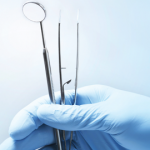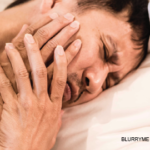During one activity, the PA students polled the class of first-graders to hear what they thought about different foods. They showed the children pictures of apples, cookies, juice and vegetables. Many children thought juice was good for you because it’s like fruit, Ms. Miller says, but they were unaware that it is often loaded with added sweetener.
“We had to explain to them about the sugar content,” says Ms. Miller, “how much sugar is in juice and how you shouldn’t go to sleep with that because it’s bad for your teeth.”
The PA students presented their message with a 6-year-old perspective in mind and engaged the children with props of brightly colored puppets equipped with a mouth full of teeth. They encouraged the kids to try brushing the toy puppet’s set of fake choppers in order to teach them about their own teeth.
To show them what happens to teeth exposed to different foods, “We hard boiled some eggs and dropped them in tea, dropped them in soda, dropped them in milk,” says Ms. Miller. They also explained to the children that milk is good for your teeth and for your bones. “A lot of these kids don’t know that,” she says.
The PA students kept lessons about oral health and the heart to simple examples that children can relate to and understand, Ms. Miller says. For example, one activity taught the children that what you eat affects your energy and how well you do in school.
The project included goodie bags containing a toothbrush and toothpaste for the children to take home, says Ms. Miller. For some of the pint-size participants, it was the first new toothbrush they had received in a while.
“The kids were very responsive to us,” Ms. Miller says. “They participated in all the activities.”
Ms. Miller attributes her enthusiasm of working with children to her own childhood experience of spending many days in a hospital battling cancer. At age 4, she was diagnosed with acute lymphoblastic leukemia.
“I love being with kids, and I love teaching them,” Ms. Miller said. “That’s part of the job as a PA.”
Big Picture
Kelsey Berg, another of Ms. Slusher’s PA students, initiated and led the project and brought other students on board to assist in the mission. As TOOTH’s campaign director, Ms. Berg says that she hopes to combat some of the “pushback” among those in the healthcare profession who view concern for a patient’s oral health as “just a dentist’s job.”



